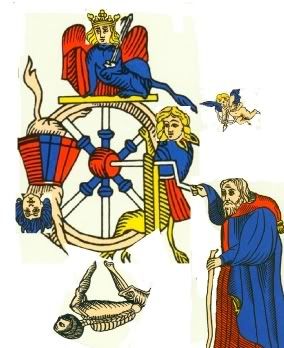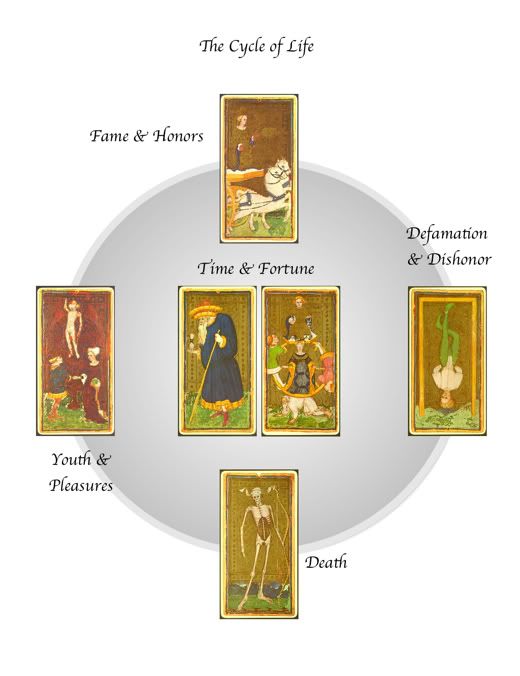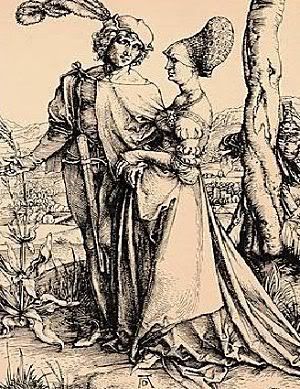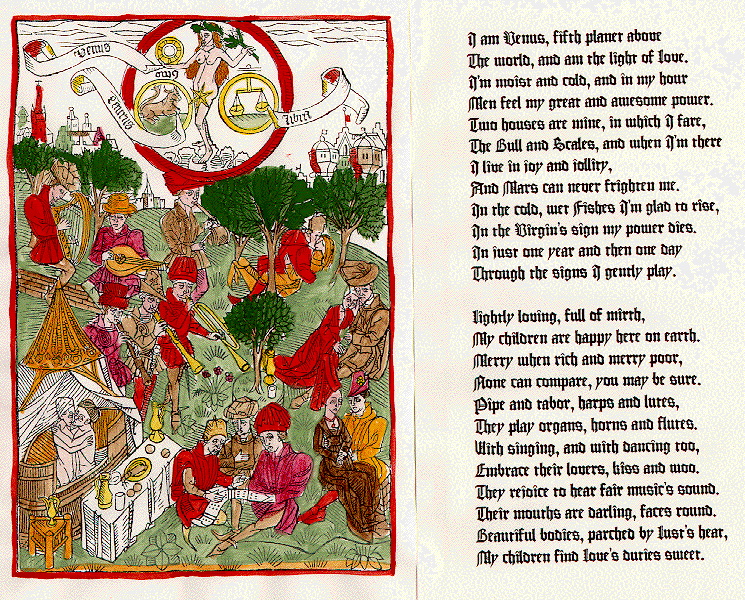The so called 'middle trumps', VI through XIII, are particularly given clarity when the 'virtues' are temporarily set aside.
In all the various historic orderings the Lover and the Chariot are paired, in some orderings the Chariot comes first, the Lover last.
Similarly the Wheel and Time (the hermit) are always paired, in some orderings the Wheel comes first, Time last.
The Traitor (Hanged Man) and Death are also always paired, with the Traitor always being first, obviously.
The basic allegory here is the 'cycle of life'. The image of Fortune's Wheel not only being central in the sequence, but central to the whole intent of the allegory.
Time and Fortune are center, the hub around which life rotates. In some ways we can say Father Time is the turner of the wheel. On the up swing of the Wheel we have Love/Pleasure/Youth (VI) and Fame/Success/Honor (VII) on the down swing of the Wheel is Defamation/Failure/Dishonor (XII) and Death (XIII).
VI and XIII are opposites. Love (betrothal) was traditionally one's 'coming of age', the beginning of one's life as an adult, so the card represents life and life's pleasures in general. The opposite is Death.
VII and XII are opposites. The triumphal parades were a great honor for the citizens of Renaissance Italy. Only successful and well known citizen were aloud the honor of riding in the parade. The XII image is taken from Italian Renaissance 'shame paintings' which were used as a way to dishonor and defame citizens.
Traditionally four figures ride the wheel (in the Tarot de Marseille the fourth is unseen, and unnamed). We can compare these figures to the four cards.
- VI - Regnabo - I Shall Reign.
- VII - Regno - I Reign.
- XII - Regnavi - I Reigned for a While.
- XII - Sum Sine Regno - I Shall Reign Never More

Cheers,
RaH






